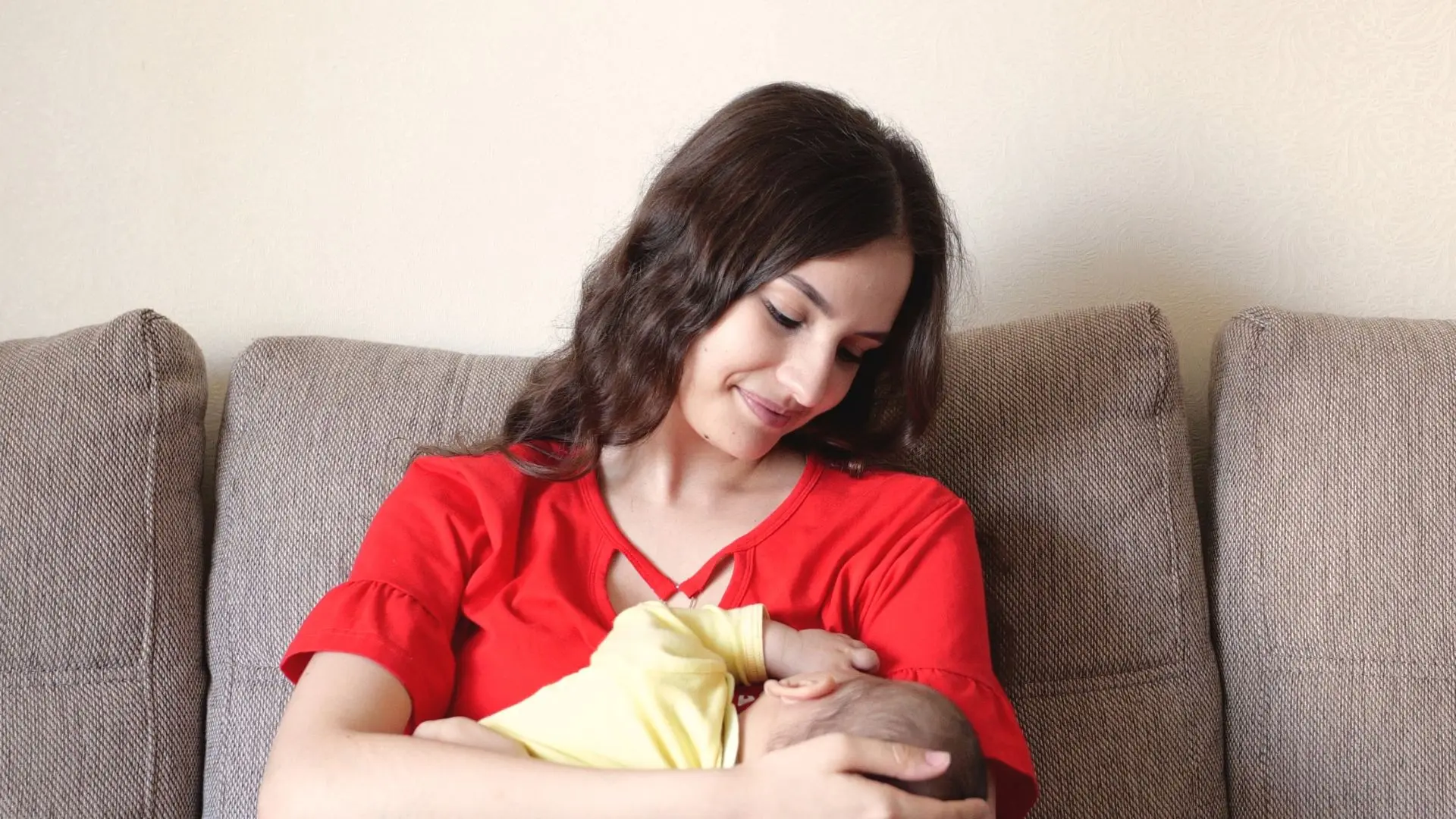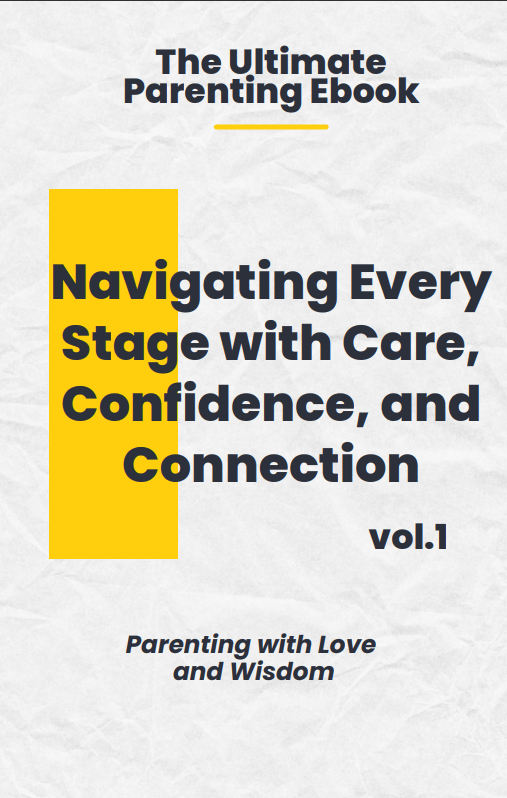Master the art of parenting a child who has intense emotions with our expert tips. Manage tantrums and encourage emotional growth in your toddler.

Parenting a toddler who experiences intense emotions can be overwhelming for both you and your child. While these feelings can sometimes be overwhelming, they are also a natural and essential part of development.
Parenting a child who has intense emotions requires a delicate balance of patience, understanding, and practical strategies that help your toddler manage their big feelings in a healthy way.
In This Blog
TogglePractical Tips for Parenting a Child Who Has Intense Emotions
Here are the tips designed to help you navigate these moments, with real-life examples to illustrate how you can apply these techniques to your everyday life.
1. Acknowledge Their Feelings
One of the first steps in parenting a child who has intense emotions is to acknowledge and validate their feelings. Young children often struggle to identify and name their emotions, so it’s essential for you to help them label what they’re experiencing.
Example
When your toddler is crying because they can’t find their favorite toy, instead of brushing off their distress, say, “I see you’re feeling sad because you can’t find your bear. It’s okay to feel that way.” This acknowledgment helps your child feel heard and understood, even if the issue seems minor to you.
2. Stay Calm Yourself
When you’re dealing with a toddler who is having an emotional outburst, it’s easy to let your own frustration bubble up. But the calmer you are, the better you can help your child. Parenting a child who has intense emotions means setting an example by staying calm during these moments of stress.
Example
If your toddler is throwing a tantrum because they want another cookie, take a deep breath and respond calmly, “I understand you’re upset, but we’ve had enough cookies for now. Let’s take a break and maybe we can have more later.”
3. Create Predictable Routines
Toddlers thrive on predictability. By establishing consistent routines, you can reduce the anxiety that often leads to emotional meltdowns. Routines give children a sense of control in a world that often feels unpredictable to them.

Example
If bedtime is a common source of frustration, develop a calming bedtime routine that happens at the same time every night. This could include brushing teeth, reading a story, and cuddling. When they know what to expect, they’re less likely to resist.
4. Offer Choices
Providing limited choices allows your child to feel empowered, which can reduce the frustration that leads to intense emotions. Parenting a child who has intense emotions often means giving them small decisions that make them feel more in control.
Example
Instead of demanding your toddler put on their shoes, offer two options: “Do you want to wear the red shoes or the blue ones?” This simple act of choice reduces resistance and helps them feel more involved in decisions.
5. Use Simple, Clear Language
During emotional moments, toddlers often struggle to process complex language. When you use short, clear sentences, you make it easier for them to understand and respond. This is especially important in parenting a child who has intense emotions.
Example
When your child is upset because they have to leave the playground, say, “It’s time to go home now. We’ll come back tomorrow.” Keep it simple and straightforward to avoid adding confusion to an already emotional moment.
6. Validate, Don’t Fix
When your child is upset, your first instinct might be to fix the problem. But sometimes, what your child really needs is for you to simply acknowledge their feelings rather than immediately offering solutions.
Example
If your toddler is frustrated because they can’t build a block tower the way they want to, instead of saying, “Here, let me do it for you,” try saying, “I see you’re feeling frustrated. It’s hard when things don’t go the way we want.”
7. Teach Emotion Words
Helping your child identify and name their emotions gives them the tools to express themselves more clearly. Parenting a child who has intense emotions often involves teaching them the vocabulary to express what they’re feeling.
Example
Use an emotion chart or a simple poster with faces showing different emotions. When your child is upset, point to the corresponding face and say, “Are you feeling angry, sad, or frustrated?” This helps them start associating words with their feelings.
8. Set Clear Boundaries
It’s essential to establish boundaries so your toddler knows what’s acceptable behavior and what isn’t. Parenting a child who has intense emotions doesn’t mean allowing them to act out without limits; it means guiding them with clear expectations.

Example
If your child throws toys when they’re angry, calmly but firmly say, “I understand you’re upset, but we don’t throw toys. Let’s use our words instead.”
9. Help Them Recognize Triggers
Identifying the situations that trigger your toddler’s intense emotions can help you anticipate and mitigate potential outbursts. Over time, parenting a child who has intense emotions becomes easier as you recognize and prepare for these triggers.
Example
If you notice that your toddler tends to get upset when transitioning from one activity to another, you can prepare them by saying, “In five minutes, we’re going to stop playing and have lunch.” This helps them mentally prepare for the change.
10. Use Time-Ins, Not Time-Outs
Instead of sending your child away when they’re upset, try using time-ins, where you stay with them and help them work through their emotions. Parenting a child who has intense emotions is about connection, not isolation.
Example
When your child is overwhelmed and crying, take them to a quiet space, sit with them, and say, “Let’s take some deep breaths together until you feel calm.” This shows them that you’re supportive, even in their toughest moments.
11. Offer a Safe Space for Emotions
Create a “calm corner” or designated space in your home where your child can go when they’re feeling overwhelmed. Parenting a child who has intense emotions often means helping them find a safe place to express their feelings.
Example
Fill a corner with soft pillows, books, and calming toys. When your child is upset, gently guide them to this space and say, “Let’s go to the calm corner and take a break.”
12. Model Problem-Solving
Children learn by watching you, so modeling problem-solving skills can help them develop their own ability to manage emotions. Parenting a child who has intense emotions means showing them how to approach challenges calmly and constructively.
Example
If you accidentally spill juice, say aloud, “Oops, I spilled the juice. I’m going to get a towel and clean it up. Sometimes mistakes happen, and that’s okay.”
13. Offer Physical Comfort
Sometimes, toddlers don’t need words—they just need to be held. Physical touch can have a calming effect and help them regulate their emotions. Parenting a child who has intense emotions often involves offering hugs or a comforting hand.
Example
When your child is sobbing uncontrollably, pick them up and hold them close. You don’t need to say much—your presence alone can help soothe them.
14. Use Visual Aids
Visual aids like emotion charts, routine boards, or picture schedules can be incredibly helpful for toddlers who struggle to understand abstract concepts like time or feelings. Parenting a child who has intense emotions often requires simplifying complex ideas in a way they can grasp.

Example
Use a simple chart with faces that show different emotions. When your child is upset, point to the chart and help them identify their feelings: “Are you feeling like this sad face right now?”
15. Teach Deep Breathing Early
Deep breathing exercises aren’t just for adults—they can be a powerful tool for toddlers to learn how to manage their emotions. Parenting a child who has intense emotions means equipping them with techniques to calm themselves down.
Example
Teach your toddler to “smell the flower and blow out the candle.” Have them take a deep breath in as if smelling a flower, then blow out as if blowing out a candle. This simple exercise can help them regulate their emotions.
16. Give Them Time to Transition
Transitions are often difficult for toddlers, especially when they’re engrossed in an activity they enjoy. Parenting a child who has intense emotions involves giving them ample warning before transitions to minimize resistance.
Example
If your child is playing with blocks and it’s almost time for dinner, give them a heads-up: “In five minutes, we’re going to stop playing and have dinner.” This gives them time to adjust and reduces the likelihood of an emotional outburst.
17. Praise Positive Coping
When your child handles a situation well, offer praise to reinforce positive behavior. Parenting a child who has intense emotions includes celebrating their progress in managing their feelings.
Example
If your toddler calmly puts down a toy they were frustrated with, say, “Wow, you did a great job calming down when you were upset. I’m proud of you for trying so hard.”
18. Be Mindful of Your Child’s Sensory Needs
Many toddlers with intense emotions are also sensitive to sensory input like loud noises, bright lights, or certain textures. Parenting a child who has intense emotions often involves creating an environment that minimizes sensory overload.
Example
If your child frequently gets upset in crowded or noisy places, try bringing noise-canceling headphones or finding a quiet space where they can take a break.
19. Redirect Their Focus
Redirection is an excellent technique for parenting a child who has intense emotions. When your toddler becomes fixated on something that’s causing distress, shifting their attention to a different activity or object can help break the cycle of intense emotions.

Example
If your child is upset because they can’t have a particular snack, you can redirect their focus by saying, “Let’s go play with your favorite puzzle instead!” or “Can you help me water the plants?” This gentle distraction can help them move past the intense emotion and engage in something positive.
20. Stay Consistent
Consistency is key when parenting a child who has intense emotions. When children know what to expect from you, it builds trust and stability, reducing anxiety and emotional outbursts. Inconsistent reactions can confuse your toddler and exacerbate their emotional struggles.
Example
If your toddler tends to throw a tantrum when it’s time to leave the park, and you’ve established a rule that tantrums don’t change the outcome, stick to that rule. Each time you remain consistent, your child learns that emotional outbursts won’t alter decisions, which over time reduces these behaviors.
21. Teach and Model Empathy
Empathy is an essential skill for helping your toddler navigate their emotions and understand the emotions of others. Parenting a child who has intense emotions means helping them develop empathy by modeling it in your own behavior and teaching them to recognize others’ feelings.
Example
When your child sees another toddler crying, say, “That child is sad because they fell down. Let’s go see if they’re okay.” You can also acknowledge your child’s feelings empathetically: “I know you’re feeling frustrated because you wanted to play more, and that’s a hard feeling to have.”
22. Avoid Over-Stimulation
Toddlers with intense emotions are often more susceptible to overstimulation, which can lead to emotional meltdowns. As part of parenting a child who has intense emotions, it’s important to create a calm, soothing environment, especially in situations where you anticipate stress.
Example
In environments like large family gatherings or noisy places, minimize overstimulation by creating quiet spaces for your child to retreat to. For example, if you’re at a family party, bring a favorite stuffed toy or blanket that offers comfort and security when things get too overwhelming.
23. Be Patient with Progress
Parenting a child who has intense emotions is a long-term journey, and progress can be slow. Emotional regulation is a skill that takes time to develop, and setbacks are a normal part of the process. Patience and consistency from you are crucial to helping your child grow and learn.
Example
If your child has had a particularly challenging day with multiple emotional outbursts, it’s important to remind yourself that progress isn’t linear. Celebrate small victories, like when they use words to express frustration instead of resorting to a tantrum and recognize that setbacks are just part of their learning process.
Conclusion
Parenting a child who has intense emotions can be challenging, but it’s also an opportunity to teach your child critical emotional skills that will benefit them throughout their lives. By acknowledging their feelings, staying calm, providing structure, and offering strategies for self-regulation, you help your toddler understand their emotions in a healthy way.
Remember, the goal is not to suppress or eliminate intense emotions but to help your child recognize, manage, and express them constructively. Every emotional outburst is an opportunity for learning, and with the right approach, parenting a child who has intense emotions can become a rewarding experience for both you and your toddler.
You may also be interested in : Is Your Attachment Parenting Style Secure for Your Child?
FAQs
1. What is the best way to calm a toddler with intense emotions?
The best way to calm a toddler with intense emotions is by acknowledging their feelings, staying calm yourself, and using redirection techniques. Creating a “calm corner” or practicing deep breathing exercises can also help your child regulate their emotions during overwhelming moments.
2. How can I help my toddler express their emotions verbally?
Teach your toddler emotion words by labeling their feelings during emotional moments. Use visual aids like emotion charts to help them identify their emotions and practice using words like “angry,” “sad,” or “frustrated” during daily interactions.
3. What should I do when my child throws a tantrum in public?
Stay calm and composed when your child throws a tantrum in public. Remove them from the situation, if possible, and find a quiet space where they can calm down. Acknowledge their feelings without giving in to unreasonable demands, and use redirection or comforting strategies to help them manage their emotions.
4. Why is consistency important when parenting a child who has intense emotions?
Consistency helps toddlers understand boundaries and feel secure, reducing emotional outbursts. When children know what to expect, they feel more in control, and consistent routines and responses can help them manage their emotions better over time.
5. How can I identify triggers for my child’s intense emotions?
Pay attention to patterns in your child’s behavior, such as specific activities, transitions, or sensory stimuli that lead to emotional outbursts. Once identified, you can better prepare for these triggers by giving warnings, modifying environments, or offering comforting strategies before emotional escalation.
6. Is it okay to give my child choices when they are emotional?
Yes, offering simple choices helps your child feel empowered and reduces frustration. Limiting the options to two manageable choices can give them a sense of control and help them make decisions that support emotional regulation during stressful moments.
7. How can deep breathing help my child during intense emotions?
Deep breathing can help calm your child’s nervous system and bring focus back to their body. Teaching your child simple breathing techniques like “smell the flower, blow out the candle” can help them learn to self-regulate when they feel overwhelmed by their emotions.
8. Should I ignore my child’s intense emotions to avoid reinforcing bad behavior?
No, ignoring your child’s emotions may make them feel unheard. Instead, acknowledge their feelings and guide them toward more appropriate ways to express themselves. Set boundaries, but also offer empathy and support so they can learn healthy emotional coping skills.
9. How can I teach my child empathy when they struggle with their own emotions?
Model empathy by acknowledging your child’s feelings and helping them understand how others feel. Use examples of other children’s emotions and explain why they might feel that way, helping your child develop a sense of compassion for others.
10. How do I set boundaries without escalating emotions further?
Set boundaries calmly and consistently. Explain the reason for the boundary in simple terms, and always acknowledge your child’s feelings before enforcing limits. Reinforce that all emotions are okay, but certain behaviors are not.
11. How do I handle a toddler’s emotional outbursts before bedtime?
Establish a calming bedtime routine that remains consistent each night. Offer soothing activities such as reading or cuddling to wind down and give them a sense of security. Providing structure at bedtime can reduce the likelihood of emotional outbursts.
12. Why does my toddler have such intense emotions?
Toddlers experience intense emotions because they are still learning how to express and regulate their feelings. Their limited vocabulary and understanding of the world make it difficult for them to cope, leading to overwhelming emotions.
13. How can I help my toddler transition between activities without a meltdown?
Give your child a warning before transitions. Let them know ahead of time that they’ll need to switch activities soon, so they can mentally prepare. Offer a countdown or a fun transition task to ease the shift from one activity to the next.
14. How do I comfort my toddler during a tantrum without giving in to their demands?
Acknowledge your child’s feelings and provide physical comfort like a hug. You can stay firm on your decision while still validating their emotions. Offer soothing techniques like deep breathing or distraction without reinforcing the tantrum-causing demand.
15. How can I manage my own emotions when dealing with my toddler’s intense feelings?
Practice self-care and stress management strategies, such as deep breathing and mindfulness, to remain calm in challenging moments. Remember that your reactions set the tone for your child, so staying composed and patient will help both you and your child navigate their emotions.




